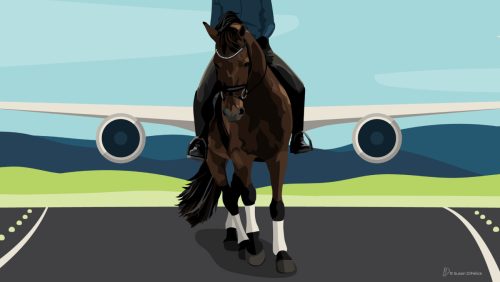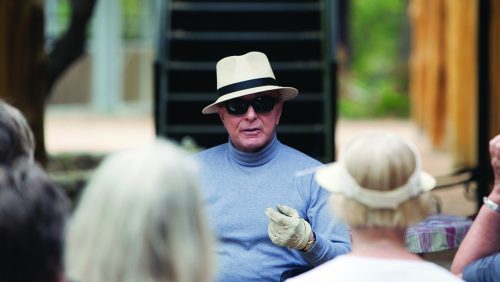Whether she’s working with a training-level mount or an experienced Grand Prix partner, dressage trainer and competitor Jessica Jo “J.J.” Tate starts most rides with a simple 20-meter circle exercise to gain her horse’s focus and enhance responsiveness.
“My goal is that the horse sort of yields and softens its rib cage on the inside, so I can get control of the inside hind leg, so I can create a little bit better access to the horse’s bend, as well as his mind,” said Tate, who is based in Landrum, S.C., and Wellington, Fla.
Tate begins by tracking left on a 20-meter circle at A. As she approaches the centerline, she walks, and then she asks her horse to do a 360-degree turn on the forehand off her inside leg before trotting away.
“Then I’ll just repeat that a couple of times in the same direction because I have found a lot of times horses are very one-sided beings. I like to stick with one side, so that it comes pretty easily,” she said. “It’s a little like a puppet on a string; when I put my inside calf on, I want to have the horse answer me with his inside hind leg.
“I will always have the rider [carry] the whip on the inside, so you can truly tell and teach that horse how to, from the pressure of the inside leg, call that inside hind leg,” she continued.
When she feels her horse starting to accept her aids and understand the question she’s asking—anticipating it in a positive way—she then changes rein and completes the exact same exercise tracking right.
ADVERTISEMENT
“It’s really important when you change directions to start where you started in the original direction and not where you left off,” Tate said. “Horses sort of learn a little bit differently on each side, just like they see things differently out of each eye.
When you go in the other direction, sometimes it feels like you’re starting from scratch. It can be easy to get frustrated and be like, ‘We just did this on the last direction.’ But for them it’s, ‘Oh, so your right leg means right hind leg.’ They’ve got to take that time to connect the dots, and for me it’s a little bit like a child learning the alphabet.”
From this exercise, a green horse learns the basic meaning of the rider’s leg aids, which is helpful when teaching leg-yields, shoulder-ins and half passes later. But for Tate, this exercise transcends all levels. She initially learned the exercise from Kathy Connelly, who suggested she try it with a Grand Prix horse that wasn’t stepping evenly with both hind legs in the piaffe. But this “miracle exercise” created balance and evenness as well as obedience and suppleness.
When on the ground, whether teaching a student or leading a clinic, Tate also uses the exercise as a cure-all when a horse is hot, lazy, distracted or stiff.
“I use this on some of my Grand Prix horses, just a refresher, like, ‘Hey, you know you need to speed up this hind leg,’ ” she said. “On every different level, it has a higher level of accountability and reactions.”
This article appeared in the Jan. 30 issue of The Chronicle of the Horse, our Master’s Class special issue. See what else is in the issue in our Table Of Contents. What are you missing if you don’t subscribe?














